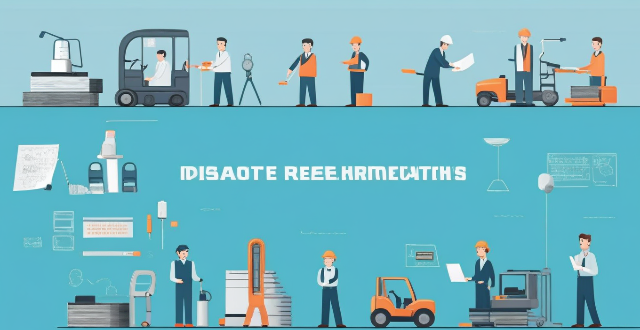The text discusses safety regulations in the mining industry, emphasizing the importance of equipment maintenance, worker training, emergency response procedures, and personal protective equipment (PPE) requirements to ensure a safe working environment for employees. It highlights the need for regular inspections, maintenance schedules, repair protocols, initial and ongoing training, hazard identification, evacuation plans, first aid kits, communication systems, hard hats, gloves, safety glasses or goggles, and hearing protection as crucial elements of these regulations. The article concludes by stressing the significance of prioritizing safety above all else to minimize risks and prevent accidents in the mining industry.

Safety Regulations in the Mining Industry
Introduction
Mining is an inherently dangerous activity that requires strict safety regulations to protect workers from harm. Safety regulations in the mining industry aim to minimize risks and ensure a safe working environment for all employees. These regulations cover various aspects of mining operations, including equipment maintenance, worker training, emergency response procedures, and more. In this article, we will discuss how safety regulations apply to the mining industry.
Equipment Maintenance
One of the most critical aspects of safety in the mining industry is maintaining equipment properly. All mining equipment must be regularly inspected, maintained, and repaired to prevent accidents and injuries. This includes:
- Regular inspections: Equipment should be inspected at least once a month by qualified personnel to identify any potential issues before they become serious problems.
- Maintenance schedules: Each piece of equipment should have a maintenance schedule that outlines when specific tasks need to be completed.
- Repair protocols: If equipment fails or breaks down, there should be clear protocols for repairing or replacing it as quickly as possible.
Worker Training
Another essential aspect of safety in the mining industry is ensuring that workers are adequately trained to perform their jobs safely. This includes:
- Initial training: All new employees should receive comprehensive safety training before starting work on any mining site.
- Ongoing training: Regular refresher courses should be provided to all employees to ensure they remain up-to-date with the latest safety practices and regulations.
- Hazard identification: Workers should be trained to identify potential hazards in their work areas and report them to management immediately.
Emergency Response Procedures
In the event of an emergency, such as a fire or explosion, having effective emergency response procedures is crucial. These procedures should include:
- Evacuation plans: Clear evacuation routes should be established and communicated to all employees, along with regular drills to ensure everyone knows what to do in case of an emergency.
- First aid kits: First aid kits should be readily available throughout the mine site, and employees should be trained in basic first aid techniques.
- Communication systems: A reliable communication system should be in place to allow for quick and efficient communication during emergencies.
Personal Protective Equipment (PPE)
Finally, personal protective equipment (PPE) plays a vital role in ensuring worker safety in the mining industry. PPE requirements vary depending on the type of mining operation but typically include:
- Hard hats: Workers should wear hard hats at all times while on-site to protect against head injuries.
- Gloves: Gloves should be worn to protect hands from cuts, burns, and other injuries.
- Safety glasses or goggles: Eye protection is essential to prevent injuries caused by flying debris or chemicals.
- Hearing protection: Earplugs or earmuffs should be worn in noisy environments to prevent hearing loss over time.
Conclusion
In conclusion, safety regulations play a critical role in ensuring the well-being of workers in the mining industry. By implementing proper equipment maintenance, worker training, emergency response procedures, and personal protective equipment requirements, mining companies can create a safer work environment for their employees. It is essential for all stakeholders involved in the mining industry to prioritize safety above all else to minimize risks and prevent accidents from occurring.